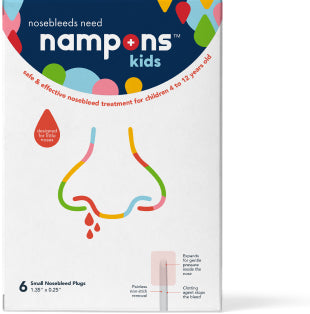Do you experience nosebleeds in the shower? You're not the only one as it's a very common issue.
But what's causing the nosebleeds, is it the water, temperature, or something else? More importantly, is there anything you can do about it?
Why Hot Showers Cause Nosebleeds
Inhaling steam is a great way to loosen the mucus in your nose and clear the senses. It's why your nose tends to run after you have spent some time in a hot shower or bath. In fact, blowing your nose after taking a shower may expel a lot of mucus.
If you have recently had a nosebleed, however, steam can have an undesired effect and may trigger another bleed.
Steam dilates the blood vessels in your nose, increasing the blood flow and potentially triggering a nosebleed.
It's not just a problem for repeat nosebleeds, either. If you are more susceptible to nosebleeds in general, you may notice that they occur more frequently when you have a hot shower or bath.
If you have a bleeding disorder or take blood thinning medications, this could be a big problem. If not, it's usually harmless and will just make for a messy shower stall.
Treating Nosebleeds in the Shower
Most nosebleeds will resolve in a few minutes, don't lead to a great deal of blood loss, and can be treated by pinching the nostrils, leaning forward, and making sure you're sitting down (to reduce blood pressure).
An ice pack applied to the bridge of the nose could also help to reduce inflammation and hasten the healing process.
Of course, you will need to step out of the shower first, but if the bleeding is not particularly heavy and it's not getting in the way, you can finish up first.
If you have a nosebleed in the shower, it may look heavier than it actually is. Once the blood mingles with the water, it'll color everything a reddish-pink and look like something out of a horror film as it circles the drain.
Can Too Much Moisture Cause a Nosebleed?
A nosebleed can be triggered by nose picking, trauma, sinus infections, and dry air, and it can be worsened by bleeding disorders, blood clotting disorders, high blood pressure, and conditions that cause blood vessels to form abnormally.
Humidity levels can trigger nosebleeds, but it's usually dryness and not moisture that causes the problem. If the skin on your face and hands is very dry and cracked, there's a good chance that the same thing is happening to the delicate lining on the inside of your nose. You can use saline sprays and petroleum jelly to add some moisture to this area and provide some much-needed protection.
Should I Worry about Nosebleeds?
The blood vessels in your nose are very delicate and nosebleeds occur when these blood vessels become damaged. Most nosebleeds occur in the front or "anterior" part of your nose, in the nasal septum.
A bloody nose is typically not something that you need to worry about.
If the nosebleed is heavy and/or lasts for more than 15 minutes, you should consult with a health care provider as medical intervention might be required.



